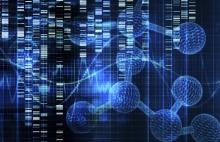
September 26 2017

Since the implementation of streamlined and abbreviated reporting many within the forensic science profession have become increasingly concerned about the use of DNA profile match reports in contested criminal cases.
Much has been published on DNA evidence interpretation, with the majority academic and practitioner view repeated in guidance from the Home Office Forensic Science Regulator and ENFSI (European Network of Forensic Science Institutes). This guidance provides a defined, demonstrable and logical process that also allows experts to exercise their experience. The process defines the role of experts in assessing the evidential value of DNA profile matches, with the primary mechanism being the assessment of the likelihood of a DNA match given two competing propositions. These generally represent all or part of the allegations and a defence alternative.
In practice these propositions can be reported in overly simplistic forms or can be highly complex successions of interpretations. Whatever the degree of complexity, the responsibility for this process is squarely placed with the forensic expert practitioner and provides the basis for answering questions relevant to trial. After all, while it might be reasonable for lawyers and courts to consider whether a defendant’s account or complainant’s allegations might be true, that is vastly different to considering the likelihood of getting a set of scientific test results; unless one also has the detailed scientific knowledge to do so.
If this division of expert and legal roles could be more strictly maintained, then many of the misunderstandings of DNA evidence might be avoided.
For example: when asked whether a DNA profile match might be explained by a defendant’s account, I would first need to know what type(s) of material there might have been in the sample and the concentration ('quant' value) of DNA found, before considering the likelihood of getting that result. But how many others within the criminal justice system would be the same, or appreciate the importance of the quant value? From a scientist’s perspective, allegations and defendant’s accounts that might be perfectly plausible for a low quant value, can be highly unlikely for a high quant, and vice versa.
So what can this mean to trial lawyers? Well, in short:
So when prosecution or defence trial lawyers receive streamlined DNA match reports (SFR1), they should be understood as simply that – a test result, not evidence. The cautious scientific approach would assume they have no evidential value until expert interpretation against the case context indicated otherwise. It can be, and often is, wildly misleading to assume that because a DNA profile match is consistent with an allegation, then it must support that allegation. A test result will only provide a degree of support if stated or reasonable alternatives are such that the test result would at least be unlikely if not impossible.
Perhaps the greatest concern in all this debate, has been the subtle shift in the burden of proof resulting from misunderstanding or misuse of streamlined DNA profile match reports; with assumptions made and inferences asserted that a DNA match could only have resulted from the allegations, unless or until a defendant can demonstrate otherwise.